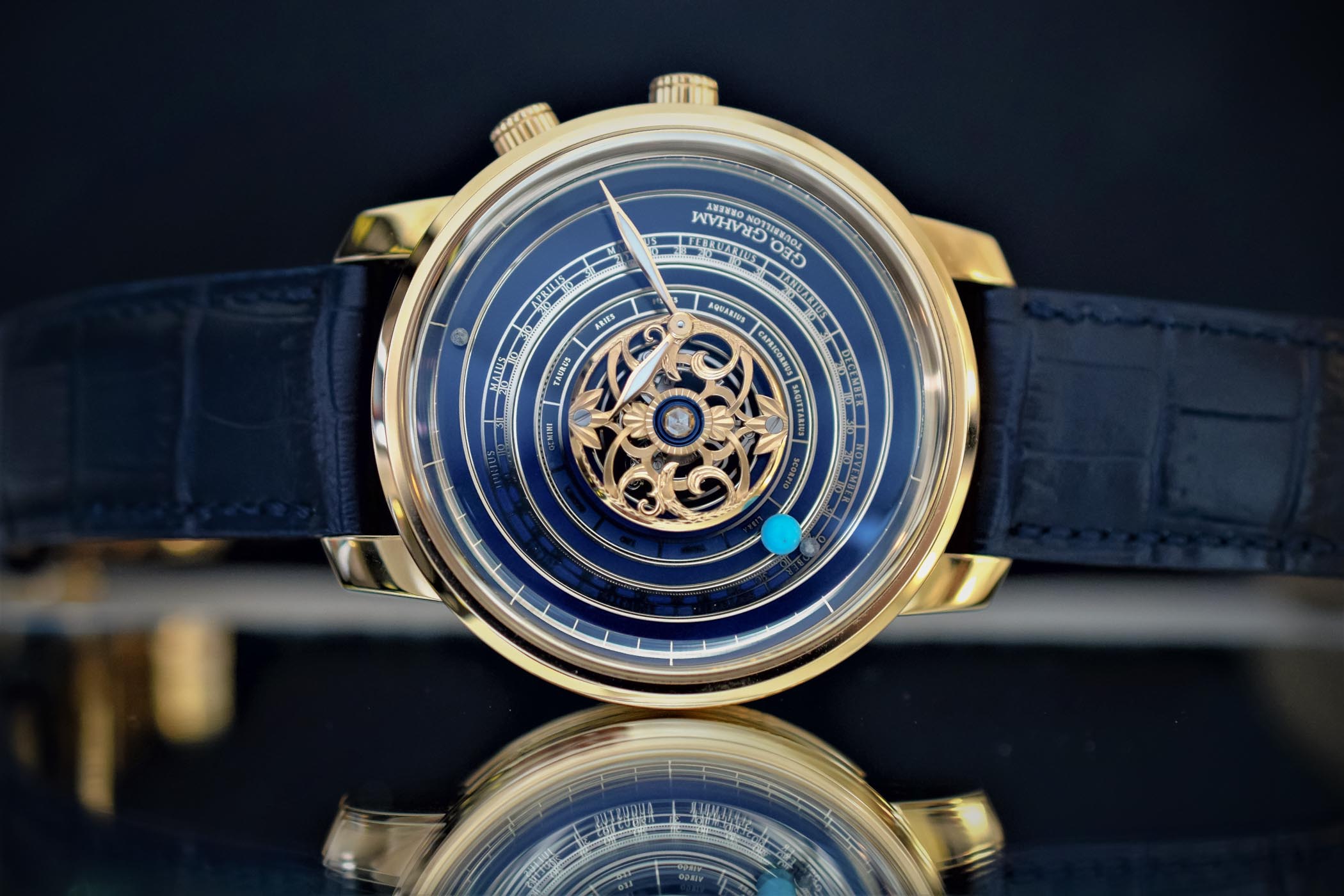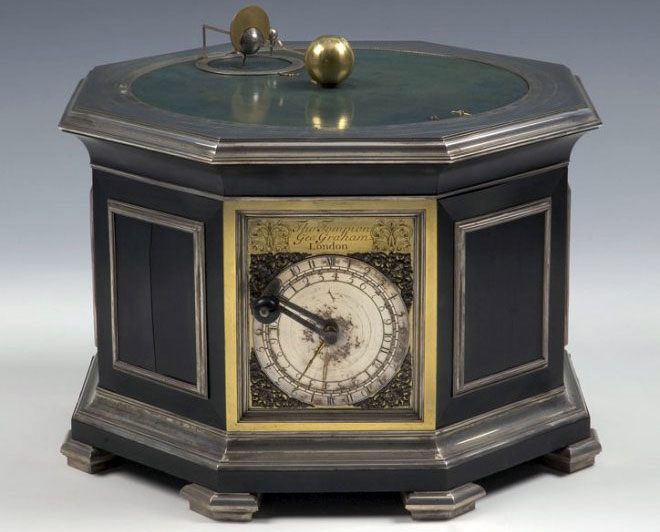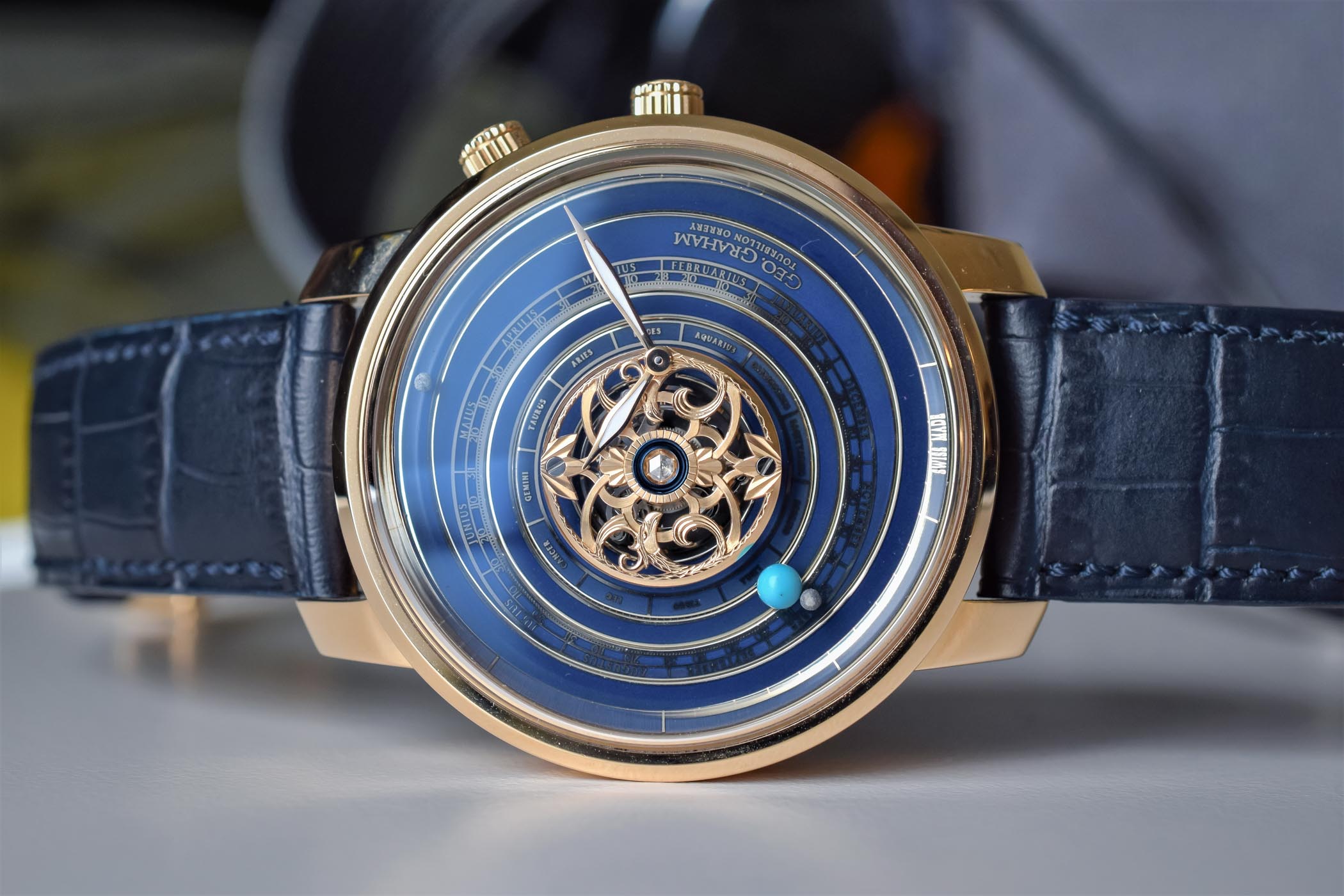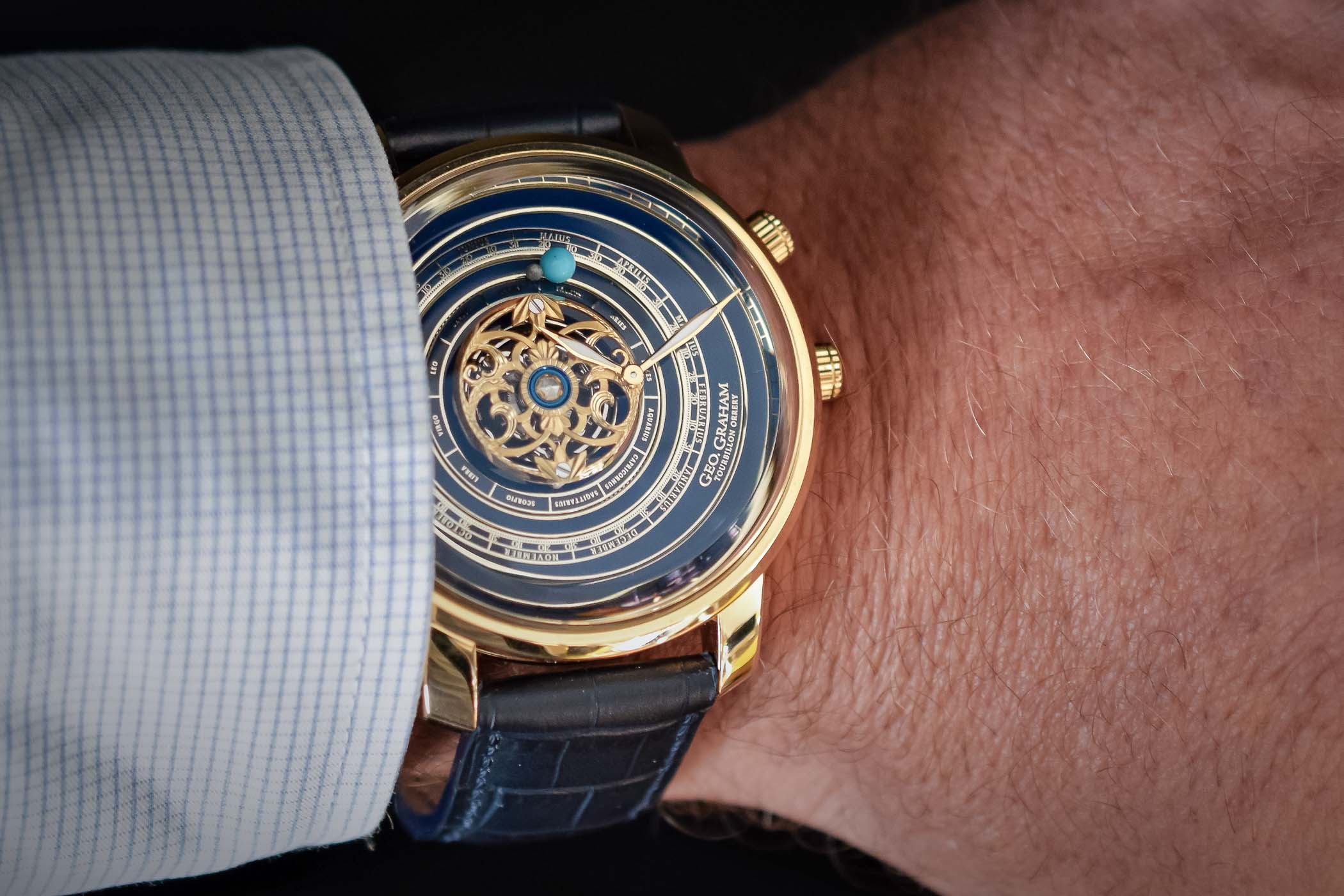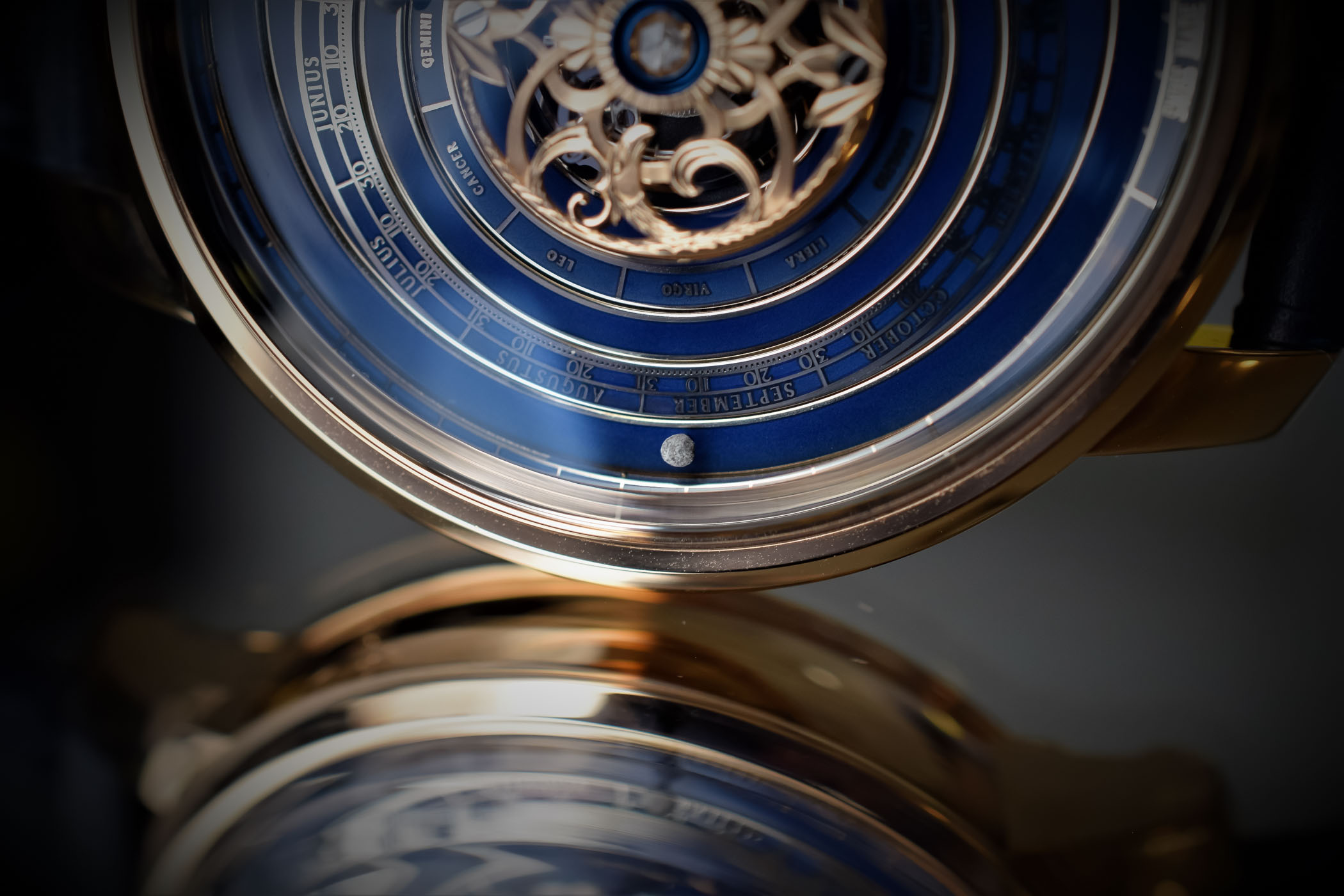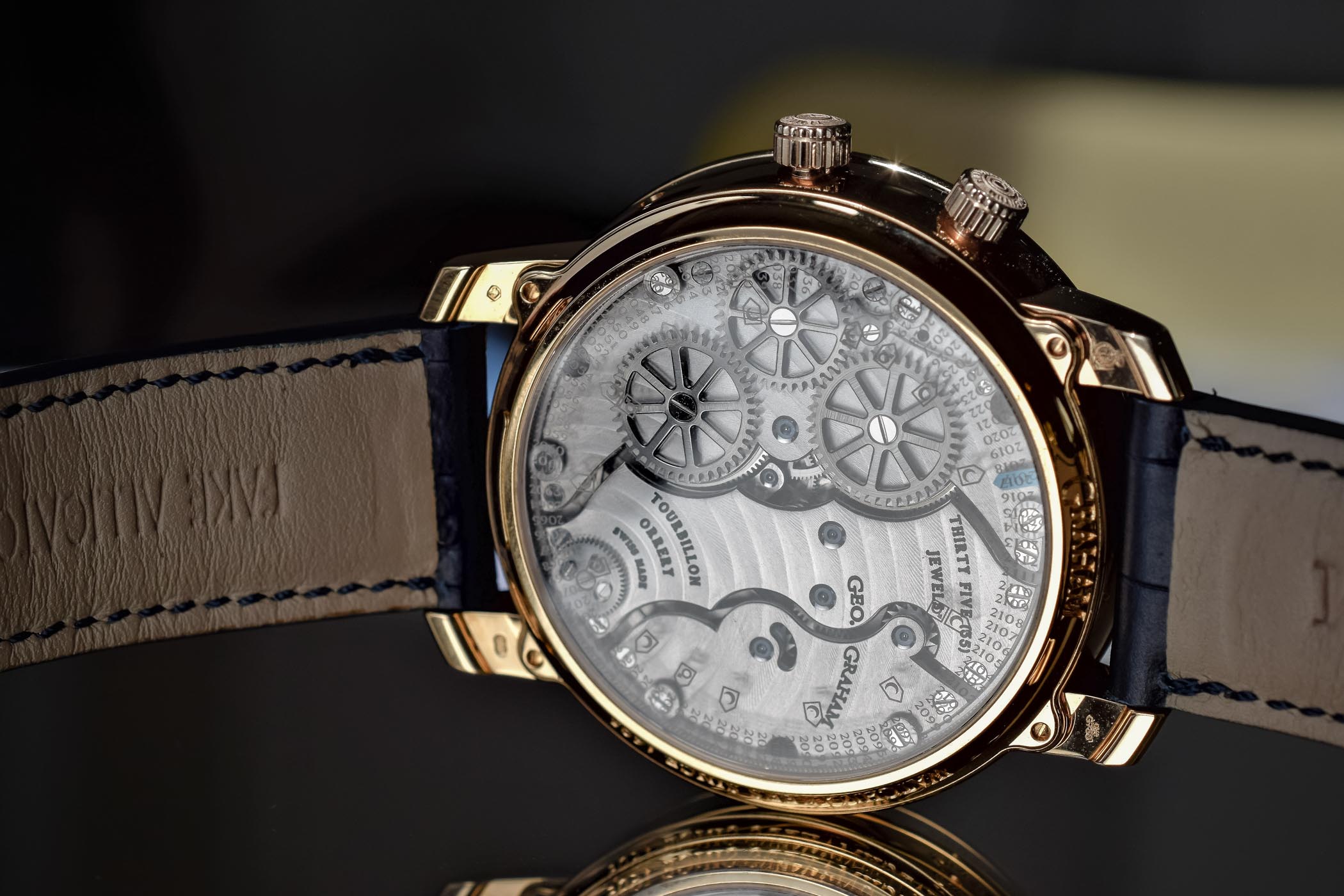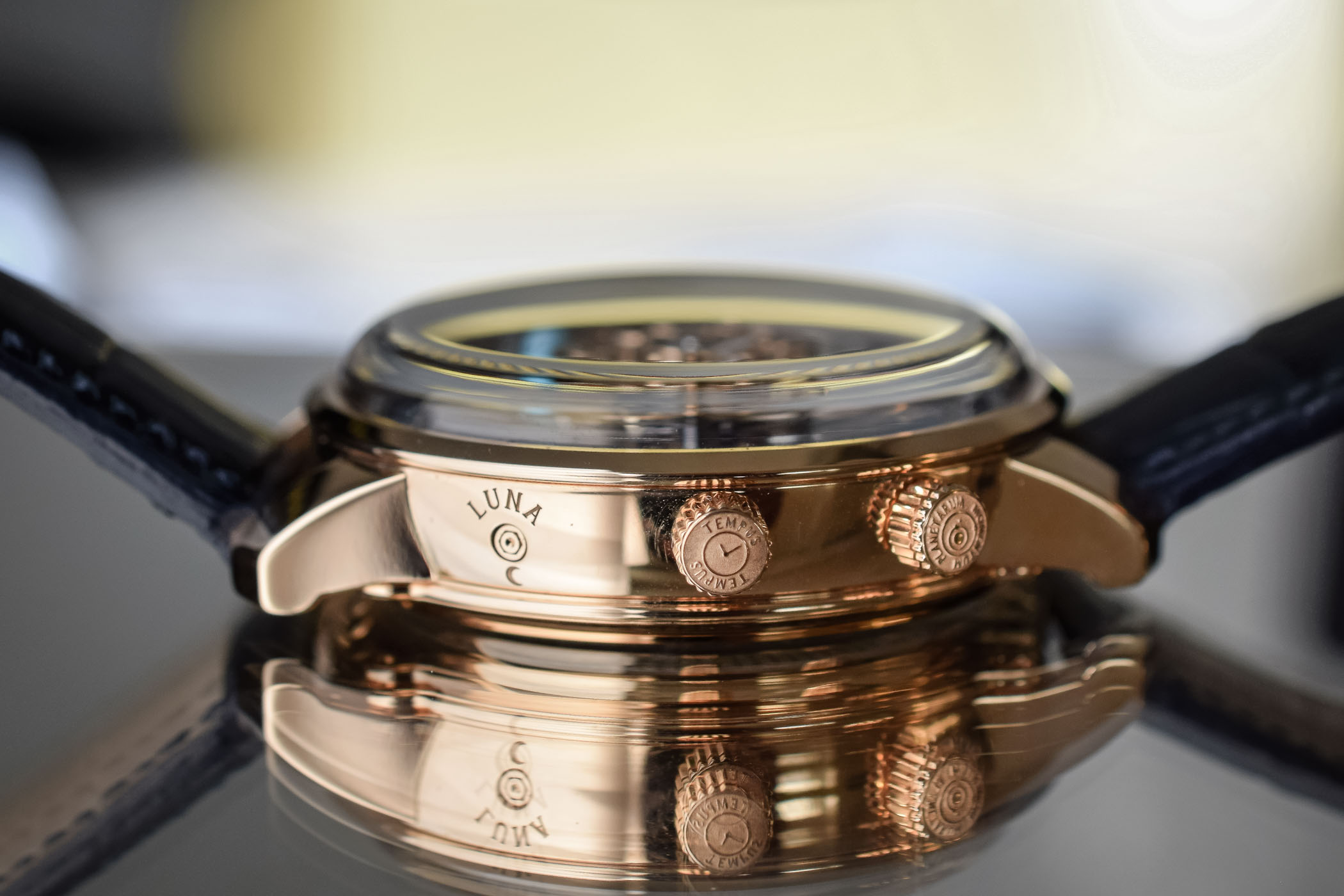Hands-On – The Geo. Graham Orrery – A Star Gazing Invitation from Graham

You probably know Graham for their bold Chronofighter, a polarizing stopwatch with its signature left-hand side lever to actuate the chronograph, but you would be wrong to think that was the only face of the brand. A part of their collection is a tribute to one of the first modern planetariums made by George Graham, the great British clockmaker and maker of scientific instruments. We go hands-on with the entrancing Geo. Graham Orrery.
Astronomical background
Horology is a child of astronomy. Ever since man wondered about the passage of time, the schedule of our lives has been shaped by the motion of heavenly bodies and their regular cycles. Time was measured by the sun, the moon and the stars. An orrery (also known as tellurion or planetarium) is a mechanical working model that demonstrates the movement of planets with their moons. Many planetariums (of course geocentric) were constructed as early as during the antiquity; of those, the Antikythera is, without doubt, the most famous example.
A fragment of what is one of the oldest known planetarium still in existence (circa 150 – 80 BC). It was used to predict astronomical positions and eclipses discovered in a shipwreck off the Greek island of Antikythera
Following the Copernicus heliocentric model of the universe and scientific discoveries from the times, one of the first and most sophisticated modern orreries was constructed in the early 18th century by George Graham and Thomas Tompion. In 1713, Charles Boyle, Earl of Orrery, commissioned the renowned instrument maker John Rowley to create such a planetarium, based on the Graham-Tompion design. Tellurions and planetariums subsequently became known as orreries.
Original Orrery – Thomas Tompion / George Graham. Early 18th century
Today, planetarium wristwatches are rare but truly fascinating timepieces, providing a unique vision of time. The Geo. Graham Orrery is one of these, alongside creations from Christiaan Van der Klaauw, Van Cleef & Arpels or Jacob & co to name a few.
The Geo. Graham Orrery
A tribute of the remarkable planetarium crafted by the British namesake clockmaker, the first version of the quite impressive Geo. Graham Orrery was unveiled in 2013 to celebrate the 300th anniversary of the Earl of Orrery’s commission. Following the 2013 20-piece limited edition with a dark grey dial, the watch is now released in a new limited edition of 8 pieces with a blue lacquer dial.
Manufactured with Christophe Claret, the Geo. Graham Orrery is a geared model of the solar system, displaying the relative positions of the Earth, the Moon and Mars around the sun. Each planet moves on its own path at its own relative speed of rotation. The Earth’s annual orbit around the sun allows indicating the date and Zodiac calendar.
The case back features a 100-year indicator, the year being displayed by the means of a blue arrow. Graham provides two additional centenary discs that can be swapped by a watchmaker, to allow for 300 years of accuracy. These 100-year scales indicate when the orbit of the heavenly bodies needs to be adjusted. This is necessary by one day every 25 years for Mars and one day every 7 years for the moon. The Earth needs to be adjusted by one day in 1,156 years only! Interestingly, Mars orbit is slightly offset from that of the Earth to replicate more accurately the relative paths of both planets.
Mars and the Earth have quite a few things in common. But compared to the Earth, a year on Mars is almost twice as long at ~686.98 Earth days. Its orbit is significantly greater because it is further from the sun. The eccentricity of its orbit is one of the most pronounced of the Solar system.
It takes the moon ~27.32 days to go around the earth once (sidereal month). Because the Earth is moving around the Sun, the Moon must travel a bit more than 360° to get from one new moon to the next, the synodic month or lunar month, corresponding to the moon phase (as indicated by moon phase watches) is longer and lasts ~29.53 days.
Comprising some 450 parts, the hand-wound calibre G1800 is regulated by a central, one-minute tourbillon visible under the centre bridge and representing the sun. The movement operates at 21,600 vibrations per hour. The two barrels allow storing 72 hours of power reserve. It is visible through the exhibition case back and it is finely decorated with circular Geneva stripes. The bridges are nicely bevelled. The screws blued. The jewels come in blue which is an unusual and original touch.
The blue lacquered dial features (from the outside to the centre) the indication of the hours and minutes, our Gregorian calendar and the Zodiac calendar in Latin, both indicated by the Earth. Unlike the first version of the Orrery for which precious stones were used, the heavenly bodies are now crafted from materials directly originating from them. The Earth is fashioned out of Kingman Turquoise, the Moon out of NWA4881 meteorite (a lunar meteorite found in North-West Africa in 2005), Mars out of Tissint meteorite (a Martian meteorite that fell in Morocco in 2011). The sun is represented by the rich hand-engraved gold centre bridge. Its baroque motive incorporates two phoenix heads, a nod to the decoration originally used by George Graham. It is embellished with a diamond cabochon in its centre – a traditional Claret feature. The hours and minutes indication is slightly off-centered. SEE THE VIDEO BELOW:
The miniature orrery is housed in a pink gold polished case, 48 mm in diameter. It features a domed sapphire crystal with double-sided anti-reflective coating. Water resistance is 50m. The control crown at 2 o’clock controls the adjustment of the planets as well as setting the calendar. The purpose of the 3 o’clock crown is to wind the watch and set the time. Correctors allow adjusting the Moon (4 o’clock) and Mars (10 o’clock). The Geo.Graham Orrery is worn on an alligator strap secured with a gold buckle.
This miniature cosmos you can hold in your hands and wear on your wrist is indeed entrancing. No witchcraft, but a poetic expression invoking science as much as art, born from remarkable watchmaking expertise and superb craftsmanship. A must-see if you ever get a chance to have a look at this rare object that retails at CHF 320,000. For more information, please visit www.graham1695.com.
Technical specifications – Geo. Graham Orrery
- Case: 48mm x 17.60mm pink gold case – domed sapphire crystal with double-sided anti-reflective coating – sapphire case back – 5 ATM / 50 m water resistant
- Movement: caliber G1800 (manufactured with Christophe Claret) mechanical with manual winding – 72h power reserve – 21,600 vibrations/h – 35 jewels – hours, minutes, tourbillon, mechanical solar system (Earth with the Moon, Mars orbits around the sun) with 100 years calendar (two additional discs/case-backs – 300 years in total. Gregorian and Zodiac calendars (indicated by the Earth)
- Strap: alligator leather strap with pink gold pin buckle
- Limited editions of 8 pieces in pink gold
- Reference: 2GGBP.U01A
- Price: CHF 320,000

